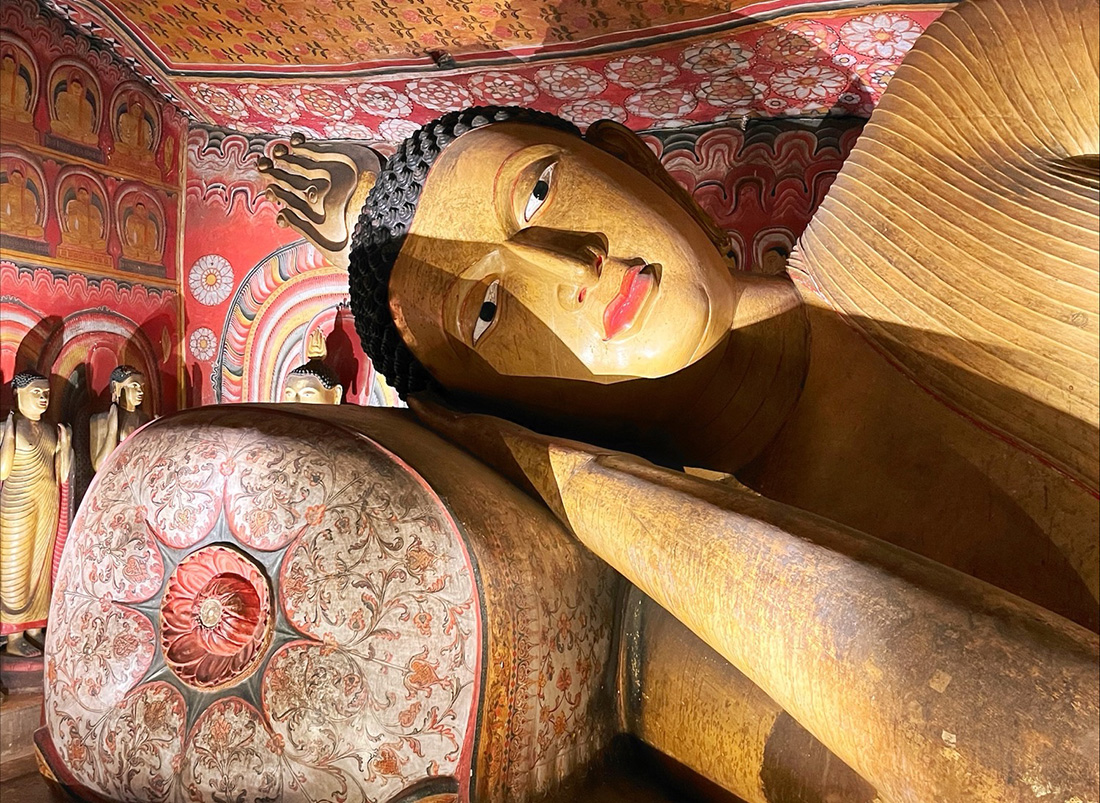Carved into the colossal embrace of a 160m high granite rock, the Dambulla Cave Temple in Matale traces its origins back over 2,000 years.
Before it became a Buddhist temple complex, the cave had already cemented its place in Sri Lankan history.
It was said to have initially been a refuge for King Valagamba (also referred to as Valagambahu) during a 15-year period of exile as Sri Lanka faced invasions by the Chola dynasty from southern India.
The Cholas launched military campaigns, capturing the island’s capital, (which was Anuradhapura at the time), and forcing King Valagamba into exile.
The caves of Dambulla provided a natural hiding place for the king during his period of exile. Seeking refuge in these caves allowed him to evade his enemies and strategise for the eventual reclamation of his kingdom.
After he managed to regain the throne, he converted the caves into a magnificent temple complex through stone carvings to express his gratitude, and showcase his commitment to Buddhism and his appreciation for the sites that played a role in his journey back to power.
Further paintings and frescos were made by later kings, most prominently King Nissanka Malla, who had the caves’ interiors gilded, earning the place the name Ran Giri (Golden Rock).
Over the centuries, it evolved into a spiritual sanctuary and an important place of worship.
